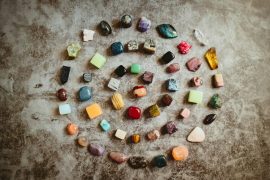Diamond earrings are a timeless piece of jewelry that exudes luxury and elegance. Whether looking to purchase a custom-made pair or a pre-existing one, one of the most important considerations to make is the type of setting used for the diamond.
The setting of a diamond can significantly affect its overall appearance, from its sparkle to its depth. In some cases, the setting can even influence the type of cut used for the diamond. In this article, we will explore the different types of diamond earring settings available and provide tips on how to choose the perfect one for yourself.
Key Takeaways
- The setting of a diamond can greatly impact its overall appearance.
- There are various types of diamond earring settings available, including bezel, halo, dangle, and illusion settings.
- When choosing a diamond earring setting, it is essential to consider personal preferences and the type of diamond cut desired.
5 Diamond Earring Setting Types
Prong Setting
The prong setting, also known as the claw setting, is the most common and traditional setting used for diamond earrings. It involves using small metal pieces to secure the diamond in place by clawing at the stone, with only the top part of the prong visible from the top.
This setting is ideal for ensuring that the diamond does not fall off and also acts as a barrier to prevent scratches. However, the prongs can catch on clothing fibers, and dirt buildup is common due to the open setting.
There are several types of prong settings available for diamond earrings, including:
3-Prong Setting
The 3-prong setting is not recommended for rings but is ideal for diamond earrings. The three prongs converge at the base of the earring to form a triangle, and when the diamond is set, it looks like a martini glass. This setting is durable and suitable for diamonds below 1.5 carats.
4-Prong Setting
The 4-prong setting offers extra protection and a touch of class, with prongs forming a basket connected by a base that cushions the diamond. This setting allows more light to enter, resulting in more brilliance and is suitable for diamonds that weigh 2 carats and below.
6-Prong Setting
The 6-prong setting provides a stronger hold and creates a crown-like effect around the diamond, accentuating its beauty. However, it is only ideal for stones that are larger than 2 carats.
8-Prong Setting
The 8-prong setting is primarily used for stones that are 3 carats and above. The stone is securely set, but the weight may cause the ears to droop.
Pros
- Great for gem visibility
- Ideal for multiple stone cuts
Cons
- May get caught in clothing fibers
In summary, the prong setting is a popular choice for diamond earrings due to its durability and ability to secure the stone in place. However, the different types of prong settings offer varying degrees of protection and visibility, making it important to choose the right setting for your diamond earrings.
Bezel Setting
The bezel setting is a classic and elegant way to hold diamonds in place. This setting features a metal band that surrounds the diamond, providing a secure hold and protection against scratches. Bezel settings are particularly well-suited for stud earrings and round-cut diamonds.
One advantage of the bezel setting is its firm and secure hold, ensuring that the diamond stays in place. However, the main downside is that the bezel can cover the sides of the diamond, making it difficult to see the stone in its fullness. Additionally, this setting is only suitable for round-cut diamonds.
Overall, the bezel setting is an excellent choice for those looking for a secure and classic way to showcase their round-cut diamond studs.
Halo Setting
The halo setting is a popular choice for earrings, featuring a large central diamond surrounded by smaller ones. The smaller stones form a halo around the central piece, creating a dazzling effect due to the larger diamond surface area that is visible. This setting can accommodate different diamond cuts, allowing for creativity in design.
One of the main drawbacks of the halo setting is that the smaller diamonds can easily fall off, requiring extra care to prevent loss. Despite this, the halo setting has many advantages, including its versatility and elegant appearance.
Some of the pros of the halo setting include its ability to work with many stone cuts, making it a flexible option for various designs. Additionally, the halo setting is a beautiful and eye-catching choice for those looking to add some sparkle to their jewelry collection.
Overall, the halo setting is a popular choice for those seeking an elegant and versatile option for their earrings, despite the need for extra care to prevent loss of the smaller diamonds.
Dangle Setting
The dangle setting is a popular choice for those who want their central stone to have more visibility and sparkle. With this setting, the diamond moves and dangles with every movement, creating a beautiful effect as it interacts with light. This setting can accommodate prongs or a bezel, and any type of cut can be used for the stone.
Pros:
- Provides great sparkle effect
- Ideal for large stones
Cons:
- Earrings can be cumbersome to wear.
Illusion Setting
The illusion setting is a technique where the stone is held securely from underneath, making it almost invisible. This creates a beautiful and elegant appearance, especially when used for a cluster of stones. However, this setting has its limitations. It is mostly applicable for small stones and cannot be used with many diamond cuts. It is almost always used with princess-cut diamonds due to its complexity.
Despite its downsides, the illusion setting remains a popular choice for those looking to create a stunning and unique piece of jewelry. Its ability to make stones appear almost weightless is a testament to the skill and craftsmanship of the jeweler.
Pros
- Creates a beautiful and elegant appearance
- Ideal for clusters of stones
Cons
- Mostly applicable for small stones
- Not suitable for many diamond cuts
Tips for Choosing the Perfect Diamond Setting for Yourself
Choosing the right diamond setting can be a daunting task, but it doesn’t have to be. Here are some tips to help you choose the perfect one for yourself:
Consider the stone cut: The stone cut you choose will determine the setting that works best. Prong, halo, illusion, and dangle settings work well with many cuts since they are designed to take the shape of the gem. Make sure to choose a setting that will allow the diamond to refract light the way you need it to.
Consider the size of the stone: If you are going for a large stone, you need a setting that will accommodate it with ease. The best settings for large stones are prong and dangle settings. For smaller stones, you can go for the bezel, halo, and illusion settings.
By considering these factors, you can choose a diamond setting that not only looks great but also enhances the beauty of your diamond.
Conclusion
When it comes to diamond earrings, the setting plays a crucial role in accentuating the stone and enhancing its overall beauty. The cut of the diamond and the style of the earrings also have a significant impact on the final look of the jewelry piece. Therefore, it is important to consider these factors when selecting or designing diamond earrings.
Stephanie, a jewelry designer with a background in fashion design, recommends paying attention to these details when creating or purchasing diamond earrings. Her experience in the industry and passion for jewelry design make her a valuable resource for those looking to invest in high-quality diamond earrings.
Overall, with careful consideration of the setting, cut, and style, diamond earrings can make a bold statement and add a touch of elegance to any outfit.




